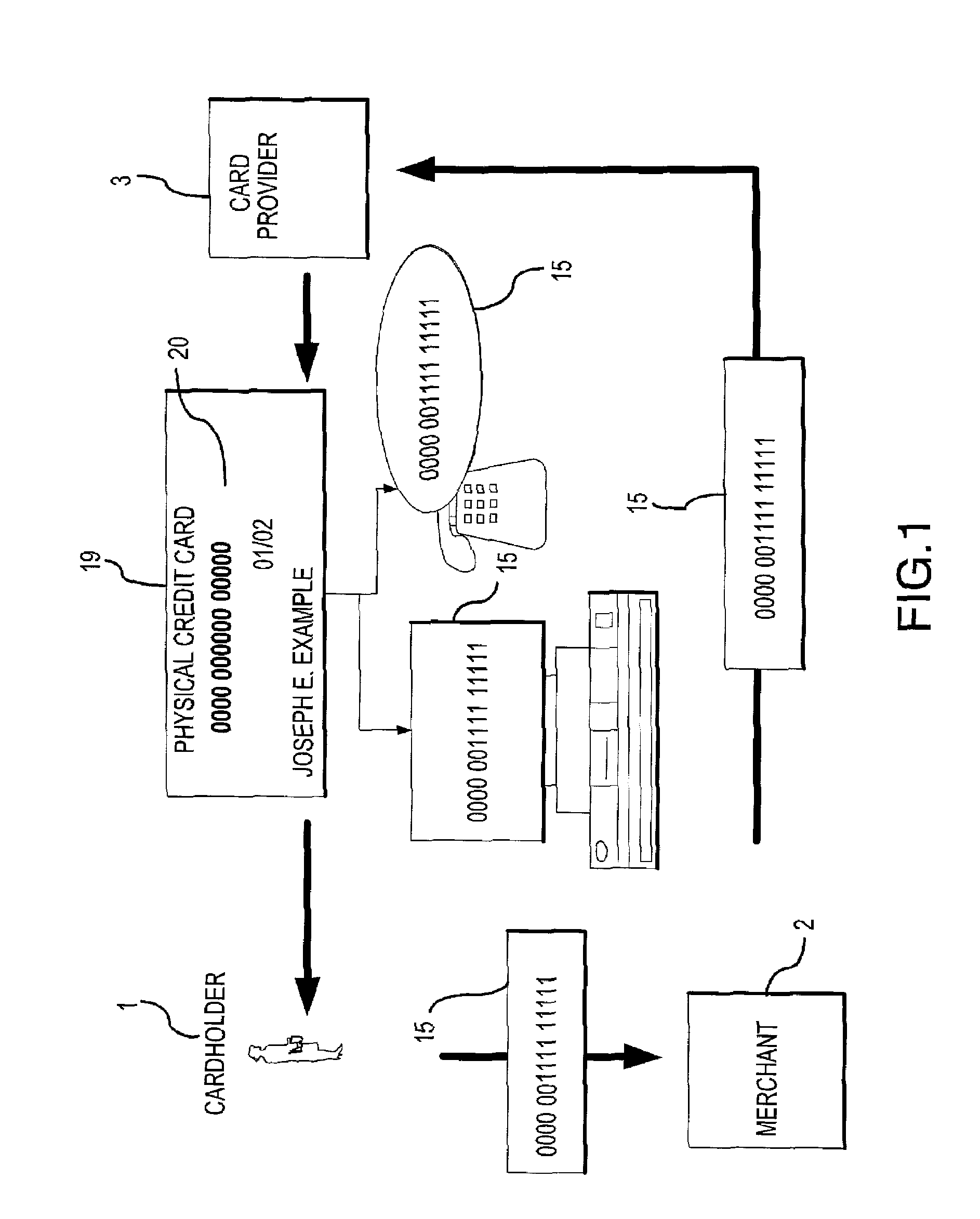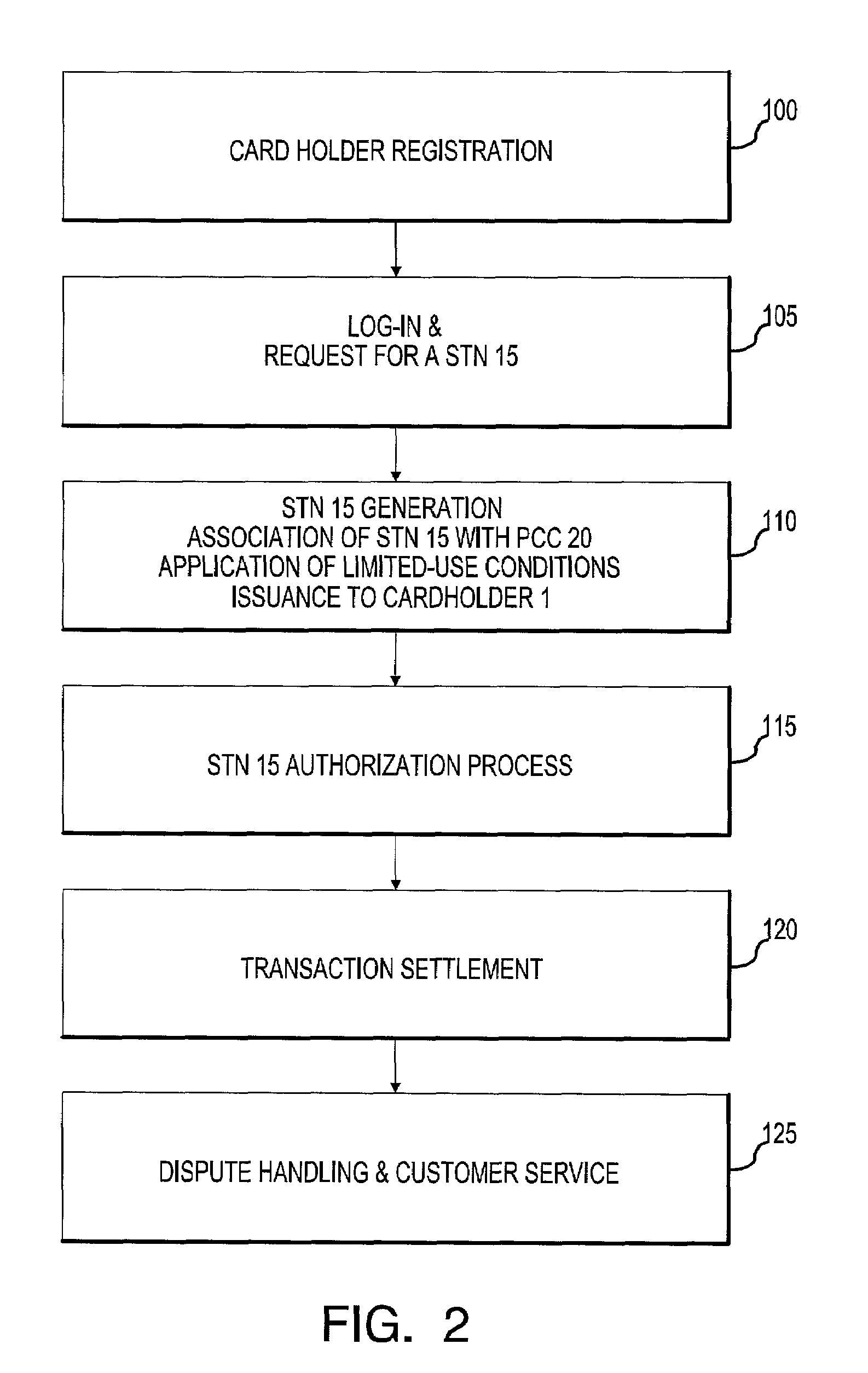System for facilitating a transaction
a technology of facilitating transactions and transactions, applied in the field of facilitating transactions, can solve the problems of increasing fraud opportunities, reducing the number of transactions, and consumers becoming increasingly cautious and leery of giving, and achieve the effect of facilitating transactions
- Summary
- Abstract
- Description
- Claims
- Application Information
AI Technical Summary
Benefits of technology
Problems solved by technology
Method used
Image
Examples
Embodiment Construction
[0036]As background, the various prior art methods for implementing transactional systems utilizing temporary numbers have failed to satisfy certain consumer demands for more secure and confident transactions. Specifically, the prior art systems have typically required, inter alia, (i) additional software to provide registration and transaction processes, (ii) the generation of a separate digital certificate embodying a non-physical online commerce card, (iii) separate activation of the temporary transaction number; or (vi) a deactivation of the temporary number if predefined conditions are not met. In short, previous transaction systems have not sufficiently adapted to real world demands for a more secure and confident transaction system that is readily compatible with existing banking and electronic commerce systems.
[0037]The present invention includes a unique system for facilitating transactions that is easily and readily adaptable to existing commercial transaction processing s...
PUM
 Login to View More
Login to View More Abstract
Description
Claims
Application Information
 Login to View More
Login to View More - R&D
- Intellectual Property
- Life Sciences
- Materials
- Tech Scout
- Unparalleled Data Quality
- Higher Quality Content
- 60% Fewer Hallucinations
Browse by: Latest US Patents, China's latest patents, Technical Efficacy Thesaurus, Application Domain, Technology Topic, Popular Technical Reports.
© 2025 PatSnap. All rights reserved.Legal|Privacy policy|Modern Slavery Act Transparency Statement|Sitemap|About US| Contact US: help@patsnap.com



